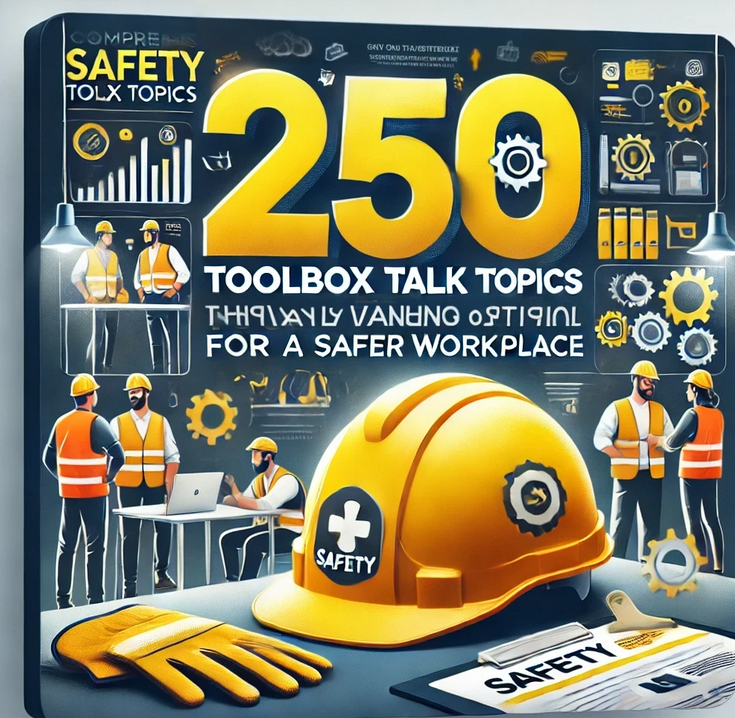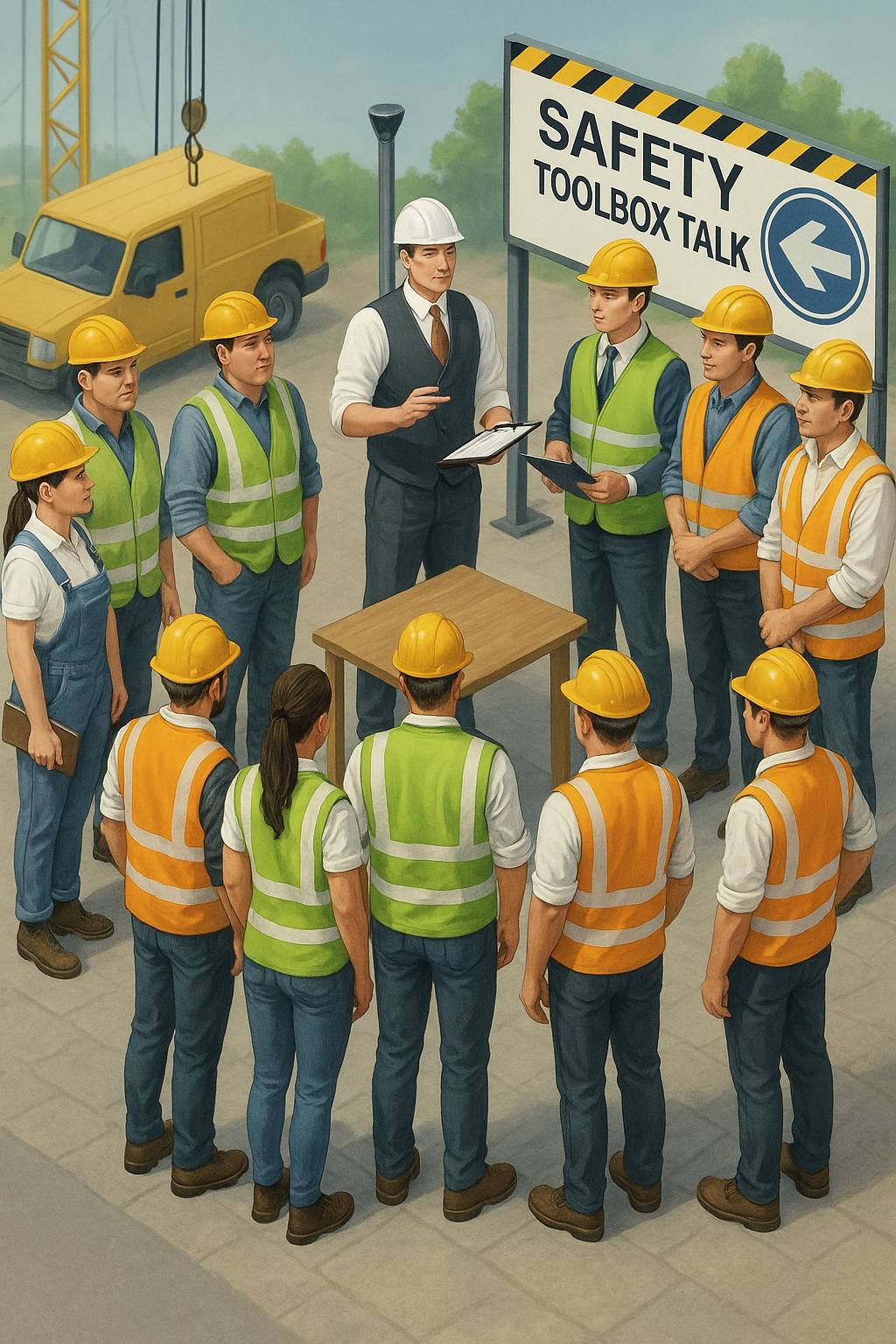Creating a safe and productive work environment starts with effective communication about potential hazards and best practices.
Safety toolbox talks are brief, focused discussions that empower employees with the knowledge to identify risks, prevent accidents, and promote well-being on the job.

This guide covers 250+ Safety Toolbox Talk Topics, offering a comprehensive resource for workplace safety leaders, managers, and teams. Each topic is designed to address specific safety challenges and provide actionable solutions that can be implemented immediately.
Why Safety Toolbox Talks Are Important
- Prevention of Workplace Accidents
Safety toolbox talks provide an opportunity to address potential hazards before they escalate into accidents. By regularly discussing safety concerns, employees become more vigilant and proactive in identifying and mitigating risks. For example, a talk about proper lifting techniques can prevent back injuries among workers handling heavy loads. - Compliance with Regulations
Many regulatory bodies, such as OSHA (Occupational Safety and Health Administration) or CCOHS (Canadian Centre for Occupational Health and Safety), require employers to provide ongoing safety education. Toolbox talks fulfill this requirement by ensuring employees are regularly briefed on workplace safety protocols and changes in regulations. - Building a Safety Culture
Regular discussions about safety emphasize its importance and encourage employees to prioritize it in their daily tasks. When safety becomes an integral part of workplace culture, employees feel valued and are more likely to engage in behaviors that protect themselves and their colleagues. - Cost Savings
Accidents can lead to costly downtime, medical expenses, legal issues, and damaged equipment. Preventing these incidents through toolbox talks helps organizations save money while ensuring a safe and efficient workplace.
Addressing Workplace Needs Through Toolbox Talks
- Tailored Information
Every workplace has unique risks based on the nature of its operations. Toolbox talks allow for tailored discussions that address specific hazards, such as electrical safety in construction or ergonomic practices in an office setting. This customization ensures relevance and engagement. - Encouraging Communication
Toolbox talks provide a platform for open communication between employees and supervisors. Workers can voice concerns, ask questions, and share experiences related to safety. This feedback loop helps identify overlooked risks and improves overall safety measures. - Reinforcing Training
Safety training sessions are often conducted periodically, but toolbox talks reinforce these lessons on a daily or weekly basis. Revisiting critical topics ensures that safety knowledge is retained and applied consistently. - Adaptability to Changes
Workplaces evolve, and new hazards can emerge with changes in equipment, processes, or personnel. Toolbox talks offer a flexible way to address these changes and keep employees informed about new safety protocols.

Key Considerations for Conducting Effective Toolbox Talks
- Relevance and Preparation
Choose topics that are relevant to the specific tasks and risks faced by the workforce. For example, if employees are working outdoors in the summer, a talk on heat stress prevention would be highly pertinent. Prepare in advance to ensure the information is accurate and engaging. - Interactive and Engaging Format
Toolbox talks should encourage participation. Ask questions, share real-life examples, or use visual aids to make the session more engaging. This ensures employees are actively involved rather than passively listening. - Time Management
Keep talks concise, ideally between 5 and 15 minutes. This ensures minimal disruption to workflow while delivering valuable information. - Documentation and Follow-Up
Record attendance and the topics discussed to demonstrate compliance with safety regulations. Follow up on the points raised during the talk, whether it’s addressing a specific concern or reinforcing key messages during daily operations.
Guide to 250+ Safety Toolbox Talk Topics
Select a topic below to learn more:
Safety is not just a policy; it is a commitment to protecting lives and fostering a positive workplace environment.
These 250 Safety Toolbox Talk Topics provide the foundation for continuous learning, awareness, and proactive safety management.
Incorporate these discussions into your daily routines, weekly meetings, or training sessions to ensure that everyone remains informed and engaged in safety practices.
Remember, every step taken to prevent an accident is a step closer to a safer and healthier workplace. Let’s prioritize safety together—because everyone deserves to go home safe and sound.
For comprehensive insights into occupational health, safety, and environmental topics, consider exploring OHSE.ca. This resource offers a wealth of knowledge on workplace safety practices, hazard prevention, and regulatory compliance, making it an invaluable tool for safety professionals.
Additionally, you can find further information and tools from trusted external resources like OSHA, CCOHS, and NIOSH. These platforms provide extensive guides, training materials, and updates on the latest safety regulations to help you enhance your safety programs and foster a safer work environment.


No comments yet